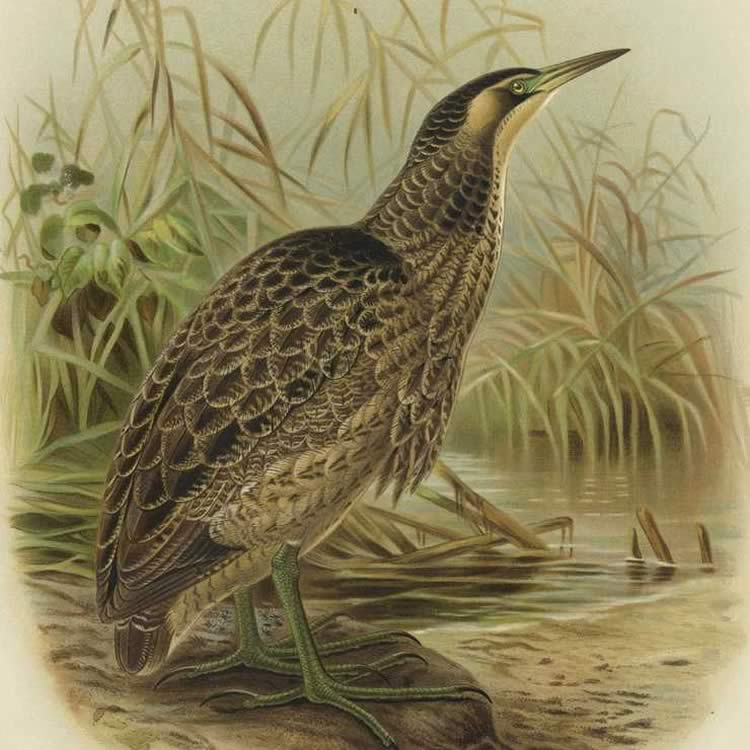Australasian Bittern

Community type
Habitat type
Tidal wetlands and macrophytes beds
This bird is more often seen than heard. With its distinctive booming voice it was believed by early Europeans in Tasmania to be a yeti amongst the wetlands vegetation!
It is a large bird, 65–75cm, and usually lives in freshwater wetlands, occasionally moving into estuarine environments. It prefers heavy vegetation, which it uses for both nesting and hunting. It forages in shallow water or stands on platforms of bent-over reeds.
Hunting methods include stand and wait; slow stalk; active pursuit or leg and wing movement to confuse or attract prey. Diet includes frogs, eels, birds, mammals, yabbies, snails, spiders and insects. Adults stand almost 1 metre high and have a large wingspan of just over 1 metre. In flight they have a very heavy appearance, with legs trailing behind. If startled it will either take off or stand still, with head lifted, to try and blend in with its surroundings.
Declining nationally and internationally, the Australasian bittern is now listed as Endangered under the Environment Protection and Biodiversity Conservation Act 1999.
If you are lucky, you might see (or hear) bitterns in the the Upper Derwent Estuary wetlands. It is important that we keep our distance to avoid disturbing them, and also retain native wetland vegetation to provide roosting and breeding habitat.
